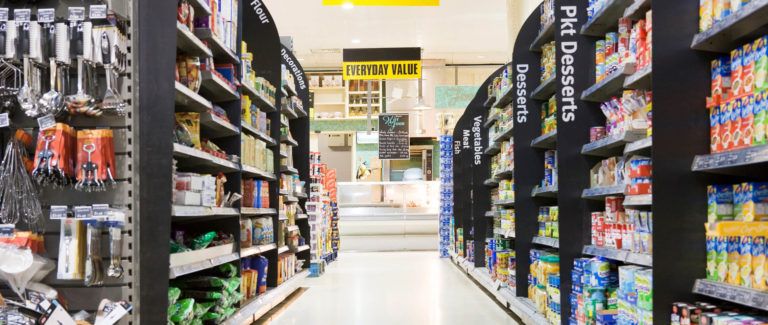With spending on IT coming under more and more pressure, not necessarily because of reduction in budgets but more from the incredible growth in number of projects a CTO is faced with, where should a company focus its attention?
There are huge calls on an IT department to deliver projects of all shapes and sizes in todays world, in retail it is even greater as the landscape for retailers is changing so fast. The exponential growth of on line retail has created massive pressures to develop and implement new technology.
Now that we are passed the first phase of this new paradigm, most retailers have on line trading set up, the focus must now be to get the delivery and customer satisfaction right. That means getting the inventory in the right place at the right time. This is not as easy as it used to be, it is all too easy to become a Multiple Channel Retailer rather than a Multi- Channel or Omni Channel retailer. That is not just semantics, many retailers duplicate inventory in different locations either physical or technically because they do not have an ability to manage inventory across their channels effectively. This often leads to higher costs, not only in inventory holding but also in labour to manage the various inventory channels. If you get it wrong you have inventory sitting in one location while sales are being lost in other locations – not something any Supply Chain Director wants to face in the Monday morning operations or board meeting.
So Where Should a CTO Prioritise His Spending?
Lets look at the opportunities and risks for the company.
Core Infrastructure
We often hear that if a company does not replace its ERP or POS solutions it is going to fall over. We also heard that if they did not replace their entire systems prior to 2000 the world would end, but it did not! Most ERP solutions are fit for purpose for many years as they are not expected to be the dynamic solution to evolving needs. If they are able to process transactions and hold the key data for the business they are unlikely to fall over as your business changes. They are the backbone to your business, but it is like a heart and lung replacement with very high risk, cost and time to replace. In todays retail world, if you select an all-encompassing ERP it is likely that by the time it is implemented it will be out of date anyway. It is the arms and legs of the business, the operational and value adding technology that will deliver the business benefits and keep you competitive.
CRM & Customer Loyalty
These are vitally important to an Omni Channel retailer, they connect the retailer to the customer and maintain that relationship. If used correctly they can increase sales and drive desired behaviour from customers. It is important that with Social Media today they are also able to manage your image in the market and ensure that negative exposure is responded to and minimised as quickly as possible and before it gets out of hand.
Finance & Accounting Solutions
This is an obvious area to get attention when it is not performing, CFO’s carry a lot of weight and if not happy the IT department will not be a happy place either. However, when the pressure is on and budgets have to prioritised, are they going to add value to the business – unlikely. Unless they are absolutely incapable of managing the financial process of the business they will not deliver a high return on investment, additional sales or significant reduction in operating costs.
Omni-channel Solutions
This is a new area and not always fully understood, a little bit like Pandora’s Box, you do not really know what you are getting until you turn the key. It is very true that many businesses have had to react to the market and invest in delivery solutions for the new on line world. It is essential that for a retailer today to remain competitive must be able to fulfil the customer’s expectations in terms of the “on line shopping experience” and the fulfilment of their requirements.
Warehouse Management
It has always been difficult to prove a return on investment for a Warehouse Management solution, you have to have them and they should make your warehouse operations more efficient and hence labour productivity improved. If they go down then there is a very serious impact on a business as stock does not get out to stores or customers. So if you do not have one or you are in danger of falling over then there is a very good case for this investment, but they do not increase sales or improve customer satisfaction.
Supply Chain Planning & Inventory Management
There are few if any areas of technology that offer larger returns on investment than Supply Chain Planning and Inventory solutions. They create large one off injections of capital to the business as inventory is reduced, improved ongoing benefits of lower inventory costs, improved sales through greater availability and customer service at store and on line, reduce end of line and end of season mark downs which directly hit profitability, reduce shrinkage of short shelf life and fresh products and finally but by no means the least improve efficiency in the replenishment and order placement functions reducing staff or enabling a company to redeploy this staff into more productive areas. Additional to this is the delay in having to increase expensive warehouse capacity in an expanding business or at crucial seasonal peaks. If the company is targeting improved customer satisfaction then giving them the best possible service by having the items they want to buy available is imperative, this leads to increased sales and satisfied customers.
‘Supply Chain Transformation: The Complete Guide’ leads you through the process of choosing and implementing the right supply chain planning solution for your business. Read our tips on what to keep in mind before and during a transformation process.
Overall
There are many places that a company can invest and spend its IT budgets, however, very few of these investments actually have the ability to generate more capital than it costs therefore releasing money back to the business for further investment, and also delivers a return on investment in bottom line profitability. Supply Chain Planning and Inventory Management has this capability yet is often overlooked for more high profile projects. I have often sat in board rooms hearing everyone complain about their poor service level or high inventory, all too often this is seen as a failure of the people in those departments or an inescapable reality of retail, the truth is that it is easy to cure and deliver massive benefits. Today even mid-sized retailers can benefit from sophisticated solutions that can transform their business – and the risk is low because with a SaaS model a company can pilot a project and prove the investment before they progress to the full roll out to their business.




